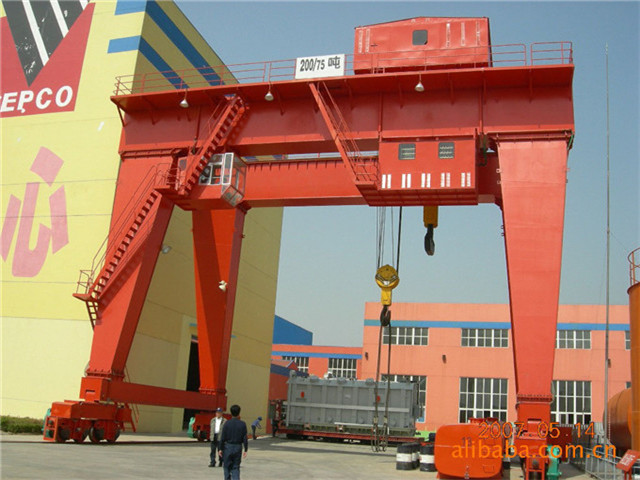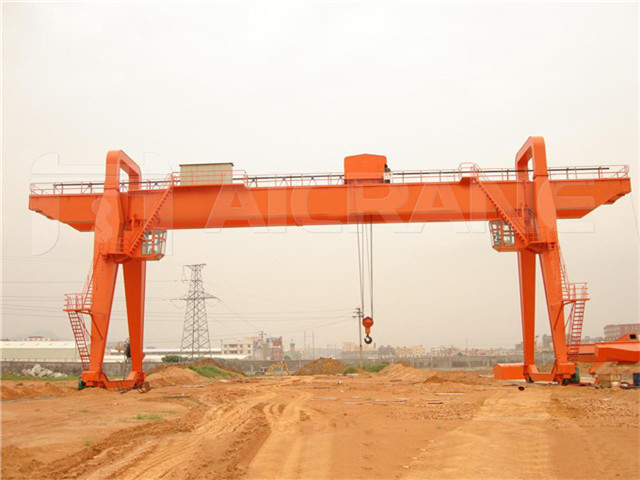The transportation of a 30 ton gantry crane demands meticulous planning, attention to detail, and adherence to safety protocols to prevent accidents, damage to the crane, and ensure the well-being of personnel involved in the process. In this comprehensive guide, we will explore six essential tips for the safe transportation of a 30 ton gantry crane.

Detailed Planning and Route Assessment
Effective planning is the cornerstone of safe gantry crane transportation. Before embarking on the journey, conduct a thorough assessment of the transportation route. Consider factors such as road conditions, weight-bearing capacity of bridges, height restrictions, and any potential obstacles along the way.
Key Planning Considerations:
Route Survey: Perform a route survey to identify potential challenges such as low bridges, narrow passages, or areas with weight restrictions. Use the survey data to plan the safest and most efficient route.
Permit Acquisition: Obtain all necessary permits for transporting oversized loads. This includes permits for weight, height, and width, depending on the dimensions of the heavy duty gantry crane.
Escort Vehicles: Depending on local regulations and the size of the gantry crane, escort vehicles may be required. These vehicles assist in guiding the transportation and notifying other road users about the oversized load.
Communication Plan: Establish clear communication channels among the transportation team, including drivers, escort vehicles, and support personnel. Ensure that everyone is equipped with radios or communication devices for real-time coordination.
Secure Rigging and Load Distribution
Proper rigging is fundamental to the safe transportation of a 30 ton gantry crane. Rigging involves securely fastening the crane to the transport vehicle using appropriate equipment and techniques.
Rigging Best Practices:
Attachment Points: Use attachment points recommended by crane manufacturer on the gantry crane for rigging. Avoid attaching to non-load-bearing components.
Even Weight Distribution: Ensure even weight distribution on the transport vehicle. Improper weight distribution can lead to instability and unsafe transportation.
Quality Rigging Equipment: Utilize high-quality slings, straps, and chains with adequate load-bearing capacity. Regularly inspect rigging equipment for wear and tear.
Secure Fastening: Double-check that all rigging connections are securely fastened, and use appropriate locking mechanisms to prevent unintentional detachment during transportation.
Weather Monitoring and Contingency Planning
Weather conditions can significantly impact the safety of gantry crane transportation. Regularly monitor weather forecasts and have contingency plans in place to address unexpected weather events.
Weather-Related Considerations:
Real-Time Updates: Utilize real-time weather monitoring tools to stay informed about current and forecasted weather conditions along the transportation route.
Wind Speed Limits: Establish wind speed limits for safe gantry crane transportation. High winds can affect the stability of the crane and pose serious risks.
Alternative Routes: Identify alternative routes or safe locations to park and secure the gantry crane in the event of sudden adverse weather conditions.
Communication Protocols: Establish clear communication protocols for the transportation crew, including procedures for monitoring weather updates and making real-time decisions based on changing conditions.

Professional Transportation Services
Engaging professional transportation services specializing in the relocation of heavy equipment is a prudent step to ensure safe and efficient gantry crane transportation.
Advantages of Professional Services:
Specialized Equipment: Professional transporters have specialized trailers, vehicles, and equipment designed for the secure and efficient transportation of heavy and oversized loads.
Experienced Crew: The crew of professional transportation services is experienced in the nuances of handling gantry cranes. They are trained in rigging, loading, securing, and transporting heavy equipment.
Insurance Coverage: Reputable transportation services typically provide insurance coverage for the transported equipment, offering financial protection in case of unforeseen incidents.
Compliance with Regulations: Professional transporters are well-versed in local and international regulations governing the transportation of heavy machinery. They ensure compliance with all legal requirements.
Preventive Maintenance and Inspection
Ensure that the gantry crane undergoes thorough preventive maintenance and inspection before transportation. Identifying and addressing potential issues in advance is crucial for safe transit.
Maintenance and Inspection Guidelines:
Structural Integrity: Inspect the structural components of the gantry crane for signs of stress, cracks, or misalignment. Address any issues to prevent structural failure during transportation.
Mechanical Systems: Check the condition of mechanical components such as gears, brakes, and bearings. Ensure that all moving parts are well-lubricated and functioning correctly.
Electrical Systems: Inspect the control panels, wiring, and electrical connections for any damage or wear. Verify that all safety features and emergency shutdown systems are operational.
Emergency Procedures: Review and reinforce emergency procedures with the transportation crew. Ensure that everyone is familiar with the steps to be taken in case of mechanical failure or other emergencies.
Personnel Training and Safety Measures
Invest in training for personnel involved in the gantry crane transportation process. Well-trained individuals contribute to safer operations and can respond effectively in case of emergencies.
Training and Safety Measures:
Operational Training: Ensure that personnel responsible for operating the gantry crane during loading and unloading processes are well-trained. Training should cover proper operation, emergency procedures, and communication protocols.
Safety Briefings: Conduct safety briefings before the transportation journey. Emphasize the importance of following safety protocols, using personal protective equipment, and maintaining situational awareness.
Communication Devices: Equip personnel with communication devices such as radios or mobile phones to facilitate real-time communication during transportation.
Emergency Response Drill: Conduct periodic emergency response drills to ensure that personnel are well-prepared to handle unforeseen situations. Practice emergency shutdown procedures and evacuation protocols.
By implementing these six crucial tips, stakeholders can significantly enhance the safety and success of transporting a 30 ton gantry crane. From detailed planning and secure rigging to weather monitoring and professional services, each aspect contributes to a comprehensive approach focused on mitigating risks and ensuring the smooth transportation of this heavy equipment.